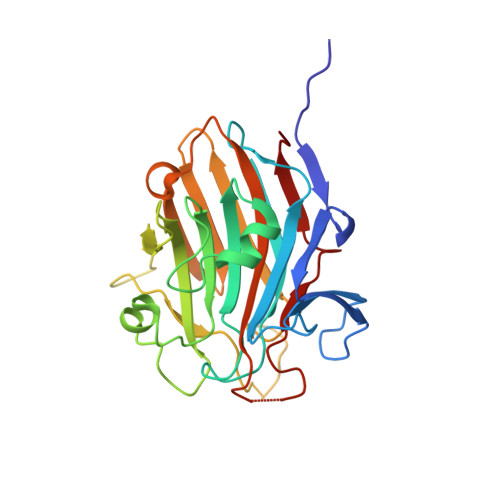Staphylococcus aureus skin colonization is mediated by SasG lectin variation.
Mills, K.B., Maciag, J.J., Wang, C., Crawford, J.A., Enroth, T.J., Keim, K.C., Dufrene, Y.F., Robinson, D.A., Fey, P.D., Herr, A.B., Horswill, A.R.(2024) Cell Rep 43: 114022-114022
- PubMed: 38568806
- DOI: https://doi.org/10.1016/j.celrep.2024.114022
- Primary Citation of Related Structures:
8TB2 - PubMed Abstract:
Staphylococcus aureus causes the majority of skin and soft tissue infections, but this pathogen only transiently colonizes healthy skin. However, this transient skin exposure enables S. aureus to transition to infection. The initial adhesion of S. aureus to skin corneocytes is mediated by surface protein G (SasG). Here, phylogenetic analyses reveal the presence of two major divergent SasG alleles in S. aureus: SasG-I and SasG-II. Structural analyses of SasG-II identify a nonaromatic arginine in the binding pocket of the lectin subdomain that mediates adhesion to corneocytes. Atomic force microscopy and corneocyte adhesion assays indicate that SasG-II can bind to a broader variety of ligands than SasG-I. Glycosidase treatment results in different binding profiles between SasG-I and SasG-II on skin cells. In addition, SasG-mediated adhesion is recapitulated using differentiated N/TERT keratinocytes. Our findings indicate that SasG-II has evolved to adhere to multiple ligands, conferring a distinct advantage to S. aureus during skin colonization.
Organizational Affiliation:
Department of Immunology and Microbiology, University of Colorado Anschutz Medical Campus, Aurora, CO, USA.


















